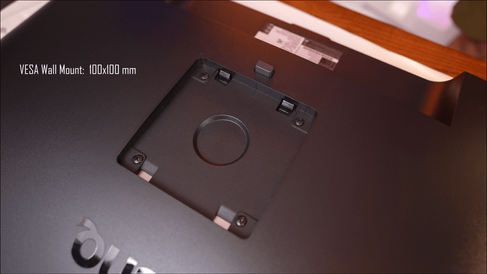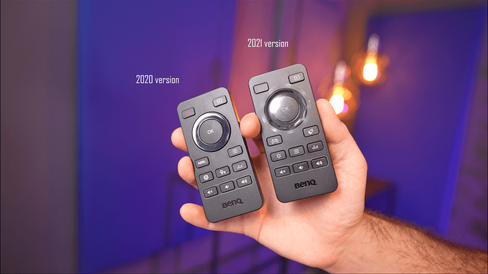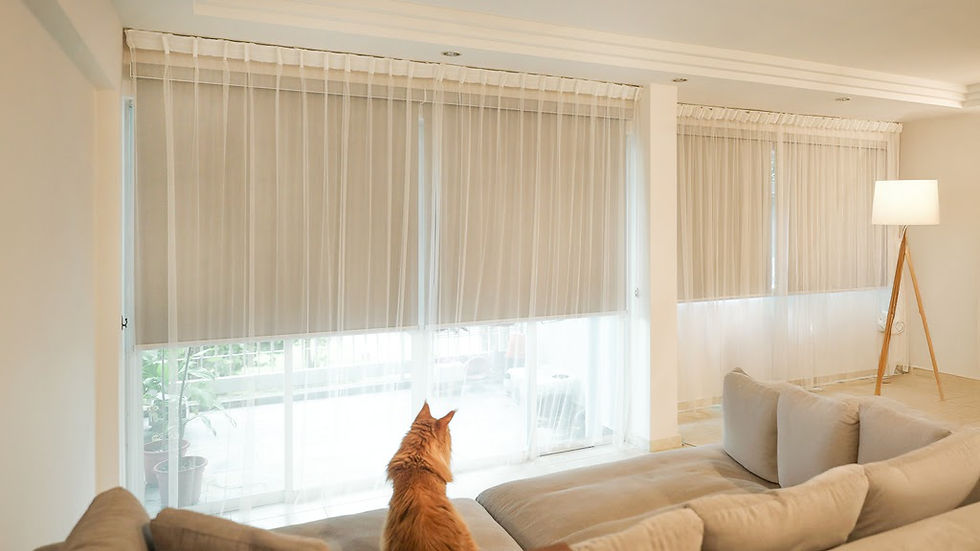Latest BenQ Monitors For Entertainment Junkies - 37.5'' EW3880R and 28'' EW2880U
- A2K
- Dec 5, 2021
- 4 min read
Updated: Aug 29, 2023
Last year we reviewed a 32 inch 4K monitor from BenQ and were really impressed with it. In large part it was due to the built-in 2.1 speaker array and overall great colour accuracy. Now BenQ is following up with two new options in the line-up - the 28 inch 4K model for those who need something smaller, as well as this 37.5 inch WQHD+ beast. We have checked them out and certainly have a few comments. In some ways they are really good and in others - a bit lacking; let's get into it!
First, let me cover the general specs and I will also highlight the differences between these units. They both feature 60Hz 10bit IPS panels. While they have built-in speakers, the ones in a 37.5 inch model are way better for two reasons - firstly it features two speakers and a woofer (in comparison to just two speakers on the 28 inch unit), secondly, it's a large monitor so there is more space for bigger sound. Check out the video above for the sound test (timestamp 1:05), and let us know in the comments what you think about them.
The other similarity between these units is the stand. It has pan, tilt and height adjustments. When I had my first try, I was pleasantly surprised how well balanced it felt. This type of stand takes quite a bit of space but it feels solid and looks sharp. However, if you want to mount these monitors, that is not a problem as both support VESA mounting. Do watch out for the weight limits, the smaller unit is 5.29 KG without the stand, and the lager is 9.8 KG.
Both of these units feature two HDMI 2.0 ports and a single display 1.4 port, as well as USB type C with 60W power delivery and headphone jack. The lager monitor also has two USB 3.0 ports which can be used as a hub when connecting via USB type C cable. This is especially useful if you are working on a laptop and have your keyboard and mouse connected at your workstation.
Moving on to gaming features, the 28 inch model includes support for AMD FreeSync while the 37.5 inch model does not. They have reported Gray-to-Gray response time of 4 to 5 ms which is reasonable but with 60HZ refresh rate these monitors are not really focused on gaming. They are more suitable for content consumption like Netflix, featuring some really nice perks here.

BenQ claims that both monitors have high DCI-P3 colour coverage - 90% and 95% respectively. We put these units through our testing suite and the results on the 37.5 inch monitor showed to have almost 97% coverage, while the 28 inch model only got 82%.
Coverage on its own does not really tell us much so we also ran a colour accuracy test on the sRGB colour space. A quick refresher on monitor colour accuracy - this is measured in delta E value from perfect. Anything under 1 is basically perfect. 1-3 may be noticed by professionals, 3-5 noticeable by enthusiasts and above 5 would likely be noticeable to most people.

In this case the result out-of-the box for a smaller display is average delta E value of 2.8 and maximum of 5.7, while larger display has average delta E value of 3.8 and maximum 6.
It is a great result for any kind of content consumption and with calibration I am sure these can be improved even further. This keeps up with the trend of last year’s 32 inch variant which was very good for binging movies as well as a good starting point for anyone who would like to do some photo or video editing.
Some extra features that you gain with these units include a really easy to navigate menu with proper joystick control, as well as remote control with all relevant shortcuts.
BenQ also features inhouse picture profiles called HDRi. These HDR enhancement features with focus on cinema or gaming. This technology automatically adjusts clarity, colours as well as screen brightness, based on ambient light level to enhance viewing experience. You also have a little button on the front to cycle through the modes. Personally I am not a huge fan of this. While watching movies I prefer to see them as the director intended, this is why I love TV’s with firm-maker mode.
It is not all great though. While these monitors support HDR content, we really can’t call them HDR monitors as they don’t get particularly bright, they max out at 300 nits which is fine for a standard monitor but about 700 nits away from true HDR experience.

Other than that, I am not really able to fault these devices. Since they have some extra features like power delivery over USB type C and speaker system - I can see why they are a bit more expensive. Feel free to check them out further using the affiliate links in the description below. Price here in Singapore for the 28 inch model comes at 579 Singapore Dollars and the 37.5 inch unit is whopping 1579 Singapore Dollars. It seems to be directly competing with LG’s ultrawide monitors.
Personally I really like the larger monitor but I may be a bit biased as I daily drive a 49 inch monitor on my desk. What really impressed me was the colour performance and speakers. While this monitor was on my desk, it was the go-to music source and it had plenty of sound to fill a small room without it being distorted. Unfortunately the same can’t be said for the 28th inch unit. Having said that, it is still a great monitor for anyone needing a compact 4k display.





















































Comments